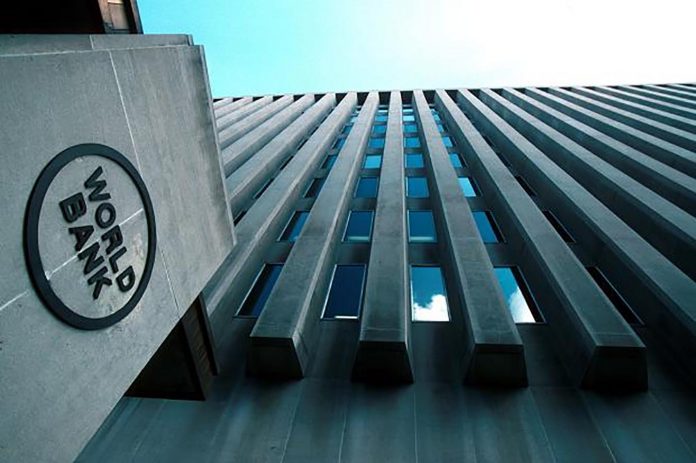ISLAMABAD: World Bank (WB) has listed Ehsaas Emergency Cash among top four social protection interventions globally in terms of number of people covered.
In this regard, the World Bank released a report on global social protection responses to Covid-19 on Saturday. This report is called the ‘living paper’ and it is a partnership effort involving 18 co-authors and a large number of contributors; the paper presents a 650-page volume and accompanying database documenting how countries and territories are planning, implementing or completing social protection measures in the context of the pandemic.
The report states that there has been an exponential growth in social protection measures between March 20, 2020 and May 14, 2021 and that a total of 3,333 social protection measures have been planned or implemented in 222 countries or territories.
Pakistan ranks fourth globally in terms of the number of people covered and 3rd globally in terms of percentage of population covered amongst those that covered over 100 million people; the World Bank has stated that only “select countries have attained impressive six-digit levels” in this regard. Pakistan’s Ehsaas Emergency Cash is one of them.
The lead author of the paper is Ugo Gentilini, lead of Social Protection at the World Bank. The report is accompanied by an excel sheet as well to make available the larger volume of data.
According to the report, Pakistan’s Ehsaas also ranked high amongst the programs that did well in terms of Planned versus actual coverage rates
According to the report, most of social protection measures are provided as social assistance. These represent 55 per cent of global programs and are the predominant form of support in most regions. Among social assistance measures, cash transfers remain the premier instrument. A total of 734 cash-based measures have been planned or implemented in 186 countries. Highest level of spending in lower middle-income countries category is observed in Mongolia Zimbabwe, Bolivia, and Pakistan.
One of the special features of the report is on delivery matters. According to the report, globally, there were essentially four ways to find and enroll new beneficiaries, the first of which was to simply add households to the list from an existing social registry.
Pakistan adopted an innovative hybrid targeting approach to enroll new beneficiaries combining emergency assistance for the known vulnerable with demand-based support for the “new poor”. Requests were sought through an 8171 SMS short code service and web-portal. Data analytics enabled eligibility ascertainment, using unique national identification numbers, and drawing on the national socioeconomic registry and wealth proxies including travel, taxes, billing, assets ownership data and government employment status.
The system was end-to-end data-driven, fully automated, rule-based, transparent, and politically neutral. Payments were biometrically verified
Ehsaas Emergency Cash delivered cash stipends of Rs12,000 to 15 million households last year, which meant helping over 100 million people or half the country’s population, representing the largest and most extensive social protection intervention ever in the history of the country.
Digital capabilities established over the past year as part of Ehsaas, Pakistan’s new poverty alleviation framework, were adapted to deliver Ehsaas Emergency Cash, in particular, a new biometric payment system, a demand side SMS based request seeking platform and a new wealth-profiling big data analytics mechanism.
The legacy of this programme is not just short-term relief. Ehsaas Emergency Cash will be an important component of the redesign of social protection, post Covid-19 and will help in the great global reimagination of social welfare envisaged in Ehsaas.
In terms of global experience sharing, the case of Pakistan provides useful lessons for other countries that utilise unique personal identification systems. It shows that by combining phones, internet connectivity, national IDs and commercial payment systems, a digital and innovative demand-based social protection system can be created to enable those in distress to seek social support during crises.
Ehsaas Emergency Cash also demonstrated how cash transfer programmes can be deployed to counter socio-economic fallouts due to external shocks such as Covid-19 which present a long-term predicament. The approach can also address rising inequality and advance attainment of SDGs in a post Covid-19 world.

























I am happy.
Would be appropriate if any link of the above mentioned report was also given
Do you believe there are 222 countries in the world? Seriously? It puts a question mark on your information provided in the article.
Brother total countries in the world are 186 and the remaining 34 are territories.
Please correct yourself. #peace
You’re Right ✅.
It says countries or terrotries.so google u may find more than that.
Good Job Sir 👍
B
It’s me am Mahander Malhi am a student
Congrats
Zardari and company
Has been claimed that, this is done under BISP .
Share the report link or accept that ,this is false information.
Quick response will highly appreciate. Thanks
That’s not how things work in the real world. The person who makes the accusations has to prove that the accusation is true. So get Zadari and Co to present evidence to support their allegations. Have a good day.
The idea is from BISP.
No doubt. Ehsaas Emergency Programme worked suceessfully and transparently without any political interference. Appreciated
Congratulations Sher leader Imran khan
Renamed the program.
Padho pakistan agay badho pakistan/Alah mere mulak ka name buland kre
So bad Propaganda done by this government. It’s their hobby To Make tags on other credits. There are differences between BISP na Ehsaas Make it correct Or Direct send their accurate information.
ProuD oF you maN❤️
Ap Pakistan ki jaan ho Imran Khan
What is a social protection plan?
My contact no:00923152165751/00923222552857: watsup available OK!!!!!!!!help me
Weldon, although seems exaggerated